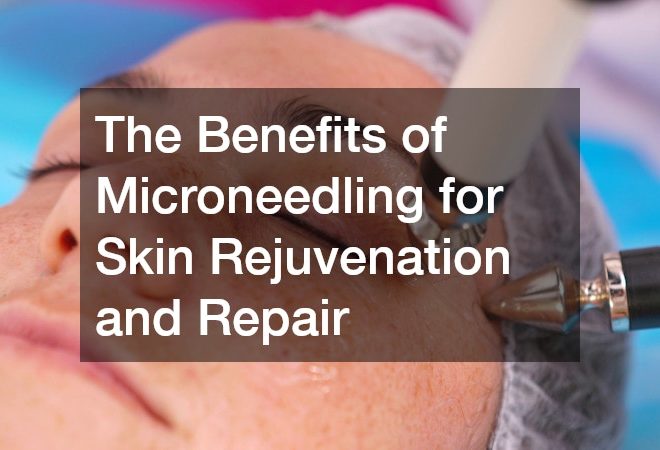
Actions to Take to Promote Young Health and Wellness

The number one priority for a parent or guardian is the well-being of their children. A child’s well-being is complete when their emotional, physical, mental, and general health needs are correctly catered for. To guarantee overall health and wellness for your young one, work with educators, caregivers, and specialists right after birth, after injury, or if the child develops complications. From taking your kid to school to ensuring they eat a balanced diet, you can do plenty to ensure your child’s overall life is in tip-top shape. Below are more actions to take to promote young health and wellness.
Address Home Issues
Homeownership is one of the biggest milestones parents aim to achieve as they build their family. However, owning a home comes with the heavy responsibility of caring for and maintaining it, which can be challenging but altogether mandatory. Postponing specific issues around the home could turn your child’s safe place hazardous.
For instance, water leaks in corridor sinks or the bathroom create a slipping hazard and cause water damage. In addition to the hospital bills you’d have to pay if your kid slips and is injured, water damage repair and restoration can be super costly for any homeowner. Inspect your home’s internal and external areas, including the gutters, windows, internal plumbing, under the sinks, behind appliances like washers, etc.
A clean home is a safe home. Any household with occupants collects waste, which can turn chaotic if you don’t have reliable waste removal services to partner with. Purchase equipment and cleaning supplies to keep your home spic and span. Vacuuming or mopping the floor in common areas should be done daily, while general deep cleaning should be done weekly. Clean different surfaces, including windows, bathroom tiles, and hidden corners.
You’ll also need to keep moisture levels around the house minimum to ensure a safe and comfortable environment for your young ones. Uncontrolled moisture around the house, especially during humid seasons, creates excellent mold growth conditions. Mold poses a serious threat to your child, particularly if they have asthma or other respiratory complication.
Don’t forget to ensure adequate air circulation throughout the house. Hire HVAC experts to inspect your air conditioning system at least once every three months. Regularly replace the filters and clean the vents to ensure that only clean air is circulating in your home.
Eliminate Major Home Problems

Millions of children report to the emergency room yearly after being injured at home. To protect your child from becoming part of this statistic, guarantee young health and wellness by eliminating risky home problems and enhancing safety at home. While necessary, many things in your home could harm your child when misused. Toys, laundry products, batteries, furniture, medicine, sharp or hot objects, and stairs are risks you must address to keep the home safe.
At the same time, you cannot live without the things mentioned above as they’re essential to your comfort. Child-proof your home to create a safe environment. Use outlet covers to shield electric outlets that aren’t in use, and invest in gates to keep toddlers from accessing the stairs to prevent falls.
If your young one is at that stubborn stage of exploration, lock all windows accessible to them to keep them from climbing through, and move any furniture they can climb on away from the window. And if they’re just learning to walk, they’ll go around holding anything solid for support, so ensure all tall, heavy furniture is secured to the wall.
Keep all cabinets locked to keep your toddler from stumbling upon hazards that pose choking risks or potentially dangerous items such as cleaning products and medications. Ensure that all forms of window bling chords, electric cords, and other risky looped chords are out of reach, and store sharp objects safely away from your child’s access. You’ll also want to effectively dispose of batteries and other hazards, and use corner cushions on furniture with sharp corners.
Regarding the external parts of the house, maintaining young health and wellness involves keeping the pool areas enclosed and access to the road via the front lawn barred. If you live in an area with plenty of raccoons, birds, squirrels, snakes, and other wildlife that commonly stray into residences to scavenge, have the contacts for wildlife removal services on speed dial. Most of these animals pose a risk to your family’s safety, but instead of handling the animals alone, critter control is better left to the professionals.
Talk to Specialty Care Providers
Specialty care is essential for a child with special needs or an existing health condition requiring professional assistance. Specialty care providers coordinate, supervise, and provide continued or initial health care services to the child. A specialty care provider like heart doctors has the experience and educational background required to help a child with health problems like cancer, allergies, asthma, musculoskeletal complications, diabetes, neurological issues, and digestive complications.
Emergency Services at Your Finger Tips
Despite doing your best to child-proof your home and keep a watchful eye on your child, they always seem to get themselves into dangerous situations that make your heart jump. A parent typically reacts quickly enough to avoid disaster. Sometimes, however, accidents and emergencies are sometimes unavoidable.
As unsettling as it may be, you must anticipate emergencies and have emergency services on speed dial when needed. Explaining and informing your child about areas around the house where they must practice caution is essential. For example, no running on the stairs or jumping over furniture because it’s the fastest way to sustain a fracture or end up in front of the emergency dentist. Emergency preparedness is essential for combating disaster at home and wherever the emergency occurs.
However, remember, there are instances where accidents may happen, and you’re not home. Teaching your mini-me how to access emergency services in such instances could save their life. That said, show them how to operate a phone and make calls (kids today are tech-savvy and will learn fast). Let them recite the numbers they’ll call for emergencies should they ever need to, and regularly role-play emergency calls to see how swiftly or well they can respond in an emergency.
A child is never too young to learn what to do in an emergency. These simple instructions can save lives and avert disastrous predicaments. With adequate emergency training, a child can seek prompt emergency services in case of a fire, if they lock themselves inside the house, a parent falls unconscious, or a sibling has a severe fall, among other emergencies. Promote young health and wellness by approaching this topic with patience and sensitivity. The goal is to gently get your child to know what to do if something terrible happens without making them anxious or upset.
Help Your Child Get Back on Their Feet

Sometimes, an accident can leave your child seriously injured and needing physical therapy to recover and regain movement. In some cases, kids are born with health complications requiring physical therapy sessions to enhance their motor skills. Whichever side of the spectrum you fall on, support young health and wellness by taking whatever necessary measures to help get your child back on their feet.
A physical therapist is an expert whose primary role entails building strength, alleviating pain, enhancing movement, and helping a child regain the use of their limbs to perform various daily activities. They use a combination of treatments to help their patients. These treatments range from balance and coordination exercises, water therapy, crawling and walking exercises for development issues, and adaptive play to flexibility exercises that help extend the range of motion. To improve circulation around injury sites, and promote faster healing, physical therapists apply techniques like electric stimulation, massage, ultrasound, and hot and cold exercises.
Prioritize Pediatric Rehabilitation Services
Kids with temporary or permanent developmental issues or early childhood deficiencies should undergo pediatric neuro-rehabilitation for maximum recovery. Rehabilitation services help kids by boosting their development and abilities to perform basic tasks like walking, brushing their teeth, speaking, etc. Pediatric rehab is ideal for kids between 0 and 16 struggling with congenital or acquired neurological complications, physical injuries, and cognitive and behavioral issues. It’s important to seek neurological rehab services for your little one if they have a spinal cord injury, cerebral palsy, a traumatic brain injury, or a pediatric stroke.
Access to a reputable pediatric rehabilitation center is crucial for providing specialized surgical, rehabilitative, and medical treatment to support young health and wellness. Through therapy, your child can undergo tailored strategies to support visual perception, language, memory, and attention and compensate for emotional or behavioral deficits.
Consult Dermatological Care Providers
Baby skin can be vulnerable because it’s super soft, and the baby’s immunity is still developing. Something as mild as a heat rash is quickly resolved by keeping the child cool and applying soothing oil on their skin. Within a couple of days, the rash is gone. However, kids can develop conditions like baby acne, hives, warts, and unusual birthmarks that have you seeking expert skin care services from a licensed dermatologist.
Fungal, viral, and bacterial infections are the culprits behind kids’ most severe skin conditions. Sometimes, a child may develop skin problems due to dermatitis and other inherited diseases. To sustain young health and wellness, a parent must procure fast treatment to relieve the affected child. Common treatments for skin disorders in children include laser therapy, antihistamines, antibiotics, prescription medication, medicated ointments and creams, and steroid or vitamin injections.
Find the Right Assistive Equipment

Assistive technology like a hearing aid device has made it possible to treat various irregularities in children and ultimately improve their quality of life. Whether a child needs permanent or temporary use of assistive equipment for a developmental issue or after an injury. Assistive equipment is designed to improve various functions in children with disabilities. These are tools that support young health and wellness at different ages. Assistive equipment enables kids to participate in various facets of life at home, school, or other social situations.
Socializing has always been a struggle for kids with epilepsy due to the risk that they may fall and hit their heads during a seizure. Thankfully, there’s now protective headgear designed to minimize the impact should a seizure occur while they play. The best part is that it is designed to be discreet and blend in with regular clothing, which can help reduce the visibility of the headgear and minimize any potential self-consciousness or stigma the child may feel.
If your child struggles with visual issues, get screen readers to make their life easy, and install handlebars and ramps to help your child move around seamlessly if they have a physical impairment that prevents them from walking comfortably. For kids with speech problems, a communication board will make self-expression a tad easier.
Promptly Manage Stomach Concerns
Kids complain of stomach pain all the time. But how do you know when they are joking and when you should take things seriously? Usually, it’s nothing serious, and the issue goes away after the child rests. However, constant complaints of abdominal pain and discomfort between the chest and pelvis are cause for concern.
Seeing a pediatrician is excellent for treating stomach concerns like running stomach and abdominal discomfort. But if the problem persists, promptly seek gastroenterology services to access crucial diagnosis and treatment. In isolated cases, stomach pain is a symptom that indicates a more serious underlying issue. Seek fast medical help if your child has the above symptoms.
Seek Professional Care After Major Injuries or Illnesses

After receiving hospital treatment for a severe injury or illness, children can go home to recuperate. But at home, the parent might require local home care services to cater to their child’s daily needs. Professional caregivers understand your child’s needs and can make things easier for the child and parent. They are well versed in dealing with health issues in kids, such as autism, physical disability, behavioral disorder, and sensory impairment.
Depending on the doctor’s advice and while facilitating young health and wellness, a parent may procure caregiver services temporarily or permanently. They can meet your specific requests and help your child with tasks like attending hospital appointments, completing various activities at home, getting ready for school in the morning, and even going for sports, shopping, and other social events your kid might be into. A professional caregiver will even help with personal care and feeding and, depending on the terms of your contract, implement daily routines to support the entire family in caring for the child.
Final Thoughts
Experts in infant and early childhood health emphasize providing a secure and safe foundation for children. Whatever challenges your child faces, the parent is who everyone looks to for support and solutions to problems. A healthy, stable home impacts a child’s confidence, resilience, and self-esteem. Above are concrete actions all parents should take to promote young health and wellness.


